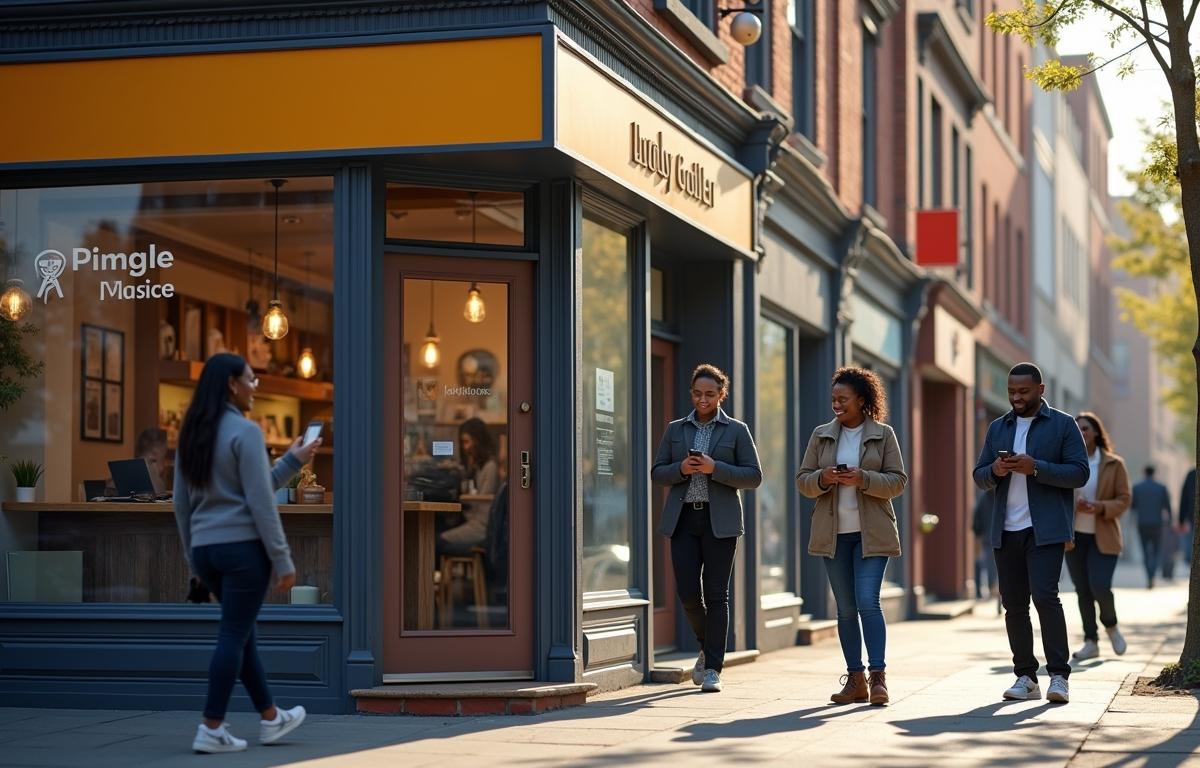
For small businesses, focusing on local SEO is essential for neighborhood success. People who search for services “near me” expect to get fast results and accurate details. When your business information is easy to find, you’ll draw in more foot traffic and online clicks. It all starts with crafting strategies that revolve around your immediate community and its specific needs.
Contents
- 1 Growing Your Reach with Google My Business
- 2 The Impact of Local Citations and Backlinks
- 3 Boost Map Pack Rankings with On-Page Essentials
- 4 Making the Most of Customer Reviews and NAP Consistency
- 5 Why Voice Search Optimization Matters
- 6 The Power of Mobile Search Optimization
- 7 Exploring Social Media for Local SEO
- 8 Embracing Directory Listings and Schema Markup
- 9 Bringing Everything Together with Local Search Ranking Factors
Growing Your Reach with Google My Business
Setting up a complete Google My Business profile increases your visibility among local search results. Photos, descriptions, and customer interactions on your listing make it simpler for potential customers to see what you offer and why it’s the perfect match. This platform also opens doors to local search optimization by showing precise directions, business hours, and contact details.
Crafting a Stellar Listing
Responding promptly to online reviews on your Google My Business page boosts trust and rapport. Uploading high-quality images of your storefront or product lineup gives assurances of authenticity. Checking your local rank tracking tools helps you spot trends, so you can fine-tune your updates for better results in local SERPs.
The Impact of Local Citations and Backlinks
Local citations on websites like Yelp or other business directory listings confirm your physical location. They also showcase consistent information about your address, phone number, and operating hours. This consistency contributes to better local search ranking factors, especially when combined with selective local backlinks from respected community blogs or industry-related websites.
Strengthening Community Connections
Establishing relationships with nearby charities or events can lead to mentions that help your local link building efforts. Pairing this outreach with business directory listings tells search authorities that your company is active in its community. As you accumulate additional references, your local citations become more powerful, pointing search engines toward your brand’s growing credibility.
Boost Map Pack Rankings with On-Page Essentials
Getting featured in the map pack rankings can significantly increase foot traffic. The map pack usually appears at the top of local search results, highlighting the top three nearby businesses that match a search query. One of the main tactics for reaching this coveted spot involves on-page SEO for local, where you optimize metadata, headings, and location-based keywords to stand out.
Utilizing Geo-Targeted Keywords
Using city names, neighborhoods, or popular landmarks in your site content signals proximity search value to search engines. It also aligns with hyperlocal SEO principles, ensuring you appear when people perform near me searches. Thorough local keyword research goes beyond basic phrases and includes unique descriptors of local communities or sub-areas, making your site more relevant for niche audiences.
Making the Most of Customer Reviews and NAP Consistency
Positive feedback does more than give you a confidence boost; it’s pivotal for local business SEO. Search engines notice customer reviews, whether they’re on social media or embedded on your website. It also helps if your NAP consistency (Name, Address, Phone) remains the same across every platform, from local SEO tools to local business directories.
Encouraging Authentic Feedback
Requesting online reviews in a friendly, respectful manner often encourages loyal customers to share experiences. When fresh feedback appears frequently, it boosts local search optimization and lets newcomers know what to expect. Each rave review can help you rank higher and compete with others in your area, presenting your brand as a trustworthy option for location-based SEO.
Why Voice Search Optimization Matters
As more consumers turn to voice assistants, adjusting your content for voice search optimization can propel you ahead of the competition. People often phrase questions differently when speaking, so building content that addresses these patterns can create a new pathway to visibility. Structured data and schema markup for local SEO also shape how voice assistants interpret and deliver your business details to consumers on the go.
Targeting Conversational Phrases
Geo-targeted content works best when it includes natural language. Terms like “Where is the best bakery in my neighborhood?” might be more realistic than short, repetitive keywords. Staying mindful of these conversational styles helps you claim a piece of the voice-activated local SERPs.
The Power of Mobile Search Optimization
Smartphones dominate near me searches, so mobile search optimization is essential. Pages that load slowly can frustrate potential customers, pushing them to competitor sites. Fast-loading images, click-to-call buttons, and clear directions transform casual browsers into store visitors, making mobile search a key element of digital marketing for local businesses.
Tailoring the User Experience
Tweaking your website design for easy scrolling, finger-friendly buttons, and minimal clutter encourages visitors to stay longer. By testing your site on different devices and leveraging local SEO tools, you ensure a consistent look and feel. These efforts reduce bounce rates and signal search engines that your pages satisfy the needs of on-the-go customers.
Exploring Social Media for Local SEO
Having a strong social presence boosts brand awareness and can also support your broader local search optimization goals. Posts that highlight local events, employee spotlights, or community achievements create personal connections. Tagging your city or region and using localized hashtags can funnel more eyes to your page, fueling engagement.
Driving Local Engagement
Encourage followers to tag your brand in posts or check in when they visit. This encourages user-generated content that can spread across networks and echo into other local SERPs. You’ll also find opportunities to partner with influencers who focus on nearby lifestyles. Their endorsements serve as digital marketing for local businesses, widening your audience base.
Embracing Directory Listings and Schema Markup
Beyond Google My Business, business directory listings further strengthen your presence. Maintaining detail-rich entries on platforms like Bing Places or niche directories helps you reach customers who rely on different apps for recommendations. Meanwhile, schema markup for local SEO organizes your most vital info, guiding search algorithms directly to your contact data, hours of operation, and location.
Coordinating Information Accurately
Check your listings regularly to confirm that your hours and address match social media and your own website. Inconsistent entries can damage your ranking, confuse customers, and reduce potential leads. A quick sweep ensures that potential clients find the right details while search engines gain confidence in your brand’s authenticity.
Bringing Everything Together with Local Search Ranking Factors
Even though local seo covers many components, the driving theme is uniformity. That uniformity holds your business name, location information, and brand identity in harmony across all online platforms. When everything matches, search engines see reliability, boosting your visibility in local search results.
Staying intentional with local keyword research, leveraging local citations, and capitalizing on Google Maps optimization leave a lasting impact. Coupling those tactics with local link building and updated local rank tracking means you can measure what’s working. Each piece complements the others, forming a complete approach that leads potential customers right to your door.



Leave a Reply
You must be logged in to post a comment.